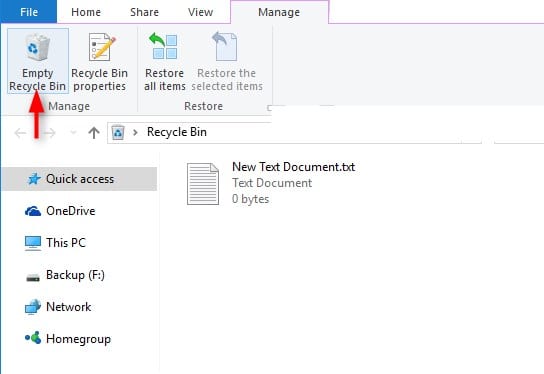
Then click Show or hide common icons on the desktop on the. Mid term, the introduction of alternate file systems like BTRFS might provide better solutions - simply not permitting folder based access to the snapshot and history. Press Windows+F to go to the Search bar, enter recycle bin in the empty box and choose Settings. in Twonky.ĭoubt there is a universal solution. If you need to open the Recycle Bin just open Windows Explorer and type Recycle Bin in the address bar.
#Hidden recycle bin windows 10 windows 10#
*Still, it might or might not permit access to the recycle bin when browsing on a per folder base i.e. Windows 10 Operating system Software Information & communications technology Technology comments sorted by Best Top New Controversial Q&A deleted Additional comment actions. Select Personalization > Themes > Desktop icon settings.
#Hidden recycle bin windows 10 how to#
) have a different aspect - here the clients talk to a database instead of a file system* might be useful to configure the application not to index data in the recycle bin. Here's how to get the Recycle Bin on your desktop in Windows 10: Select the Start button, then select Settings. Now what-if you have a good player permitting to delete folders or files - and you like to recover it?ĭLNA (or other applications like Plex, YAMJ. So we have a contradictionary situation: Simply because of the NAS can't differentiate what is a player (hiding the recycle bin), and what is a user on a "normal" workstation (with simple access to the recycle bin).

On Windows Explorer, we can manually type (add) the path to hidden folder name, similar on the OS X shell, and certainly on U**x/Linux. Use this app to try to recover lost files that have been deleted from your local storage device (including internal drives, external drives, and USB devices. In either case, neither Windows, U**X/Linux, or Apple users can easily browse to the recycle bin to recover their deleted data, making the complete design somewhat useless - however the media players using these protocols would not immediately see it. If you can’t locate a lost file from your backup, then you can use Windows File Recovery, which is a command line app available from the Microsoft Store. visibility.Įither users can easily browse to the folder from Windows (SAMBA), OS X (SMB, AFP), U**x/Linux (NFS, SMB) - requiring a visible folder - or we are going to hide the recycle bin folder (U**x/Linux/AFP/NFS) by adding a leading dot on the folder name - SAMBA does not care about this or make it hidden to SMB clients (hidden attribute flag). What on Earth does Samba have to do with those access methods? Problem is there is no conditional hide available - not on Linux, not on U**x, not on AFP, not on SAMBA - the decision is between simplicity (easy access to the recycle bin, manageability) vs. TonyPh12345 wrote:Accessing the QNAP from the media player via NFS, AFP, and/or DLNA are all options.


 0 kommentar(er)
0 kommentar(er)
